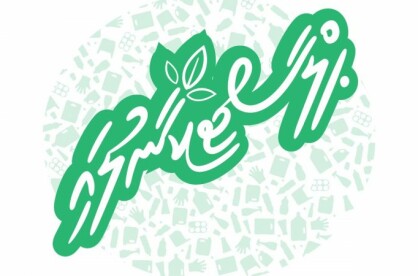The
Gender Gap Index is an
annually published report by the World Economic Forum (WEF) with the intent of capturing the magnitude of gender-based
disparities and tracking progress over time. This index quantifies
the gaps between women and men in four key areas: Economic Participation and
Opportunity, Educational Attainment, Health and Survival, and Political
Empowerment. Since
its debut in 2006, it has been the longest-running index tracking the progress
of several countries' efforts to close these gaps over time.
The scores are based on the
extent to which women have access to resources and opportunities in comparison
to men. Countries are graded on a scale of 0 to 1. A score of 1 represents
complete equality between men and women, whereas a score of 0 denotes complete
inequality.
This
year marks the 17th edition of the Global Gender Gap
Index which benchmarks gender parity across 146 countries.
Key Findings
1.
Although
no country has achieved full gender parity, the top nine countries - Iceland, Norway, Finland, New Zealand, Sweden, Germany,
Nicaragua, Namibia, and Lithuania have closed at least 80 percent of the gap. With a score of 91.2 percent, Iceland secures the top spot for the 14th year
in a row. It is also the only country that has closed the gender gap by more
than 90 percent.
2.
For
the 146 countries covered in the 2023 index, the Health and Survival gender gap
has closed by 96
percent, the Educational Attainment gap by
95.2 percent, Economic Participation and Opportunity gap by 60.1 percent, and the Political Empowerment gap by 22.1 percent.
3.
Taking into consideration the rate of progress over the 2006- 2023
periods, the number of years that will be taken to close the gaps are:
- Political
Empowerment: 162 years
- Economic
Participation and Opportunity:169 years
- Educational
Attainment: 16 years
- Health
and Survival: undefined
Performance
by Subindex
1. Economic Participation and
Opportunity
- Countries
with relatively even access for men and women: Liberia
(89.5%), Jamaica (89.4%), Moldova (86.3%), Lao PDR (85.1%), Belarus (81.9%),
Burundi (81.0%), and Norway (80%).
- Countries
with the lowest scores: Algeria (31.7%), Iran (34.4%), Pakistan (36.2%), and India (36.7%).
- An
important source of gender inequality: underrepresentation of women in the labor market.
2.
Educational
Attainment
- The subindex with
the second-highest global parity score - with only 4.8 percent of the gap left to close.
- Countries with full
gender parity in Educational Attainment have increased from
21 to 25.
- Cross-country
scores are less dispersed with the majority (117
out of 146) having closed at least 95 percent of their
gap.
- Countries with the lowest scores: Afghanistan (48.2%), Chad, the
Democratic Republic of the Congo, Guinea, Angola, Niger,
and Mali with scores
between 63.7%-77.9 percent.
3. Health and Survival
- The
subindex displays the highest level of gender parity globally at 96 percent
- Countries with the top scores: 26
countries, mostly from Europe, Latin America and the Caribbean, and
Sub-Saharan Africa displayed the top score of 98% parity.
- Countries with the lowest scores: Qatar, Viet Nam, Azerbaijan, India,
and China all score below the 95 percent mark.
4.
Political
Empowerment
- The subindex
registers the largest gender gap, at only 22.1 percent of the gap closed, and the greatest
spread of scores across countries.
- Best Performer: Iceland
stands out with a 90.1
percent parity score, which is 69 percent points above the median global score (21.1%).
- Countries with the top scores: Only
10 other countries scored above the 50 percent parity score. They are New Zealand (72.5%), Finland (70%), Germany (63.4%),
Nicaragua (62.6%), Bangladesh (55.2%), Mozambique (54.2%), Rwanda (54.1%),
Costa Rica (52.4%), Sweden (51.2%) and Chile (50.2%).
- Countries with the lowest scores: Myanmar (4.7%), Nigeria (4.1%), Iran (3.1%), Lebanon
(2.1%), Vanuatu (0.6%), and Afghanistan (0%).
- Iceland and Bangladesh are the
only countries where women have held the highest political position in a
country for a higher number of years than men. In 67 other countries, women
have never served as head of state in the past 50 years.
- The countries with the
least representation of women in parliament (less than 5%) are Maldives (4.8%
of the gender gap closed), Qatar (4.6%), Nigeria (3.7%), Oman (2.4%), and Vanuatu (1.9%).
Maldives
The overall score of Maldives is 0.649 and ranks at 124th out of 146 countries. Maldives scored well in education and health attainment, however lags behind on economic participation and opportunity for women, and on political empowerment too.
Here is the
standing of Maldives across the sub-indices in relation to the highest and
lowest-scoring countries
1.
Economic Participation and Opportunity
#131: Maldives (0.512)
#1: Liberia (0.895)
#146: Afghanistan (0.188)
2. Educational
Attainment
#91: Maldives (0.984)
#1: Argentina (1.000)
#146: Afghanistan (0.482)
3. Health and
Survival
#121: Maldives (0.962)
#1: Belarus (0.980)
#146: Azerbaijan (0.936)
4. Political
Empowerment
#103: Maldives (0.139)
#1: Iceland (0.901)
#146: Afghanistan (0.000)
Performance
of South Asia
1.
Gender Parity
- South Asia has achieved
63.4 percent parity, the second-lowest score among all 8 regions. However, this
represents a 1.1 percent rise since 2022.
- Countries
that improved: India, Pakistan,
Bangladesh, and, Bhutan with 0.5% points or more.
- Countries
that backslid: Sri Lanka, Afghanistan,
and Nepal with 0.5% points or more.
- Best performers: Bangladesh, Bhutan, and Sri Lanka.
- Bottom performers: Pakistan and Afghanistan (at the bottom of both
regional and global ranking tables).
- Timeline for full
parity: 149 years.
2.
Economic Participation and Opportunity
- South Asia remains the furthest
away from this parity having closed 37.2 percent of the gap. However, this
represents a 2.4 percent rise since 2022.
- Countries that improved: Pakistan, India, and Bangladesh.
- Countries that backslid: Maldives and Nepal.
- Best performers: Bhutan,
Sri Lanka, and Maldives.
- Bottom performers:
Pakistan and Afghanistan.
3.
Educational Attainment
- Ranking 5th out
of all the 8 regions, South Asia has closed 96 percent of the gap.
- Best performers: India, Sri Lanka, and Maldives.
- Bottom performers: Bangladesh,
Nepal, Pakistan, and Afghanistan (achieved less than 95 percent parity)
- Afghanistan is a negative
outlier with only 48.1 percent of the gender gap
4.
Health and Survival
- South Asia has achieved 95.3 percent parity, the second-lowest regional parity score. However, this
represents a 1.1 percent rise since 2022.
- Countries
that improved: Pakistan,
India, Maldives, and Nepal.
- Full parity
in life expectancy: only Sri
Lanka has attained.
5.
Political Empowerment
- This index represents the widest
gender gap
- South Asia has achieved
25.1 percent parity, the fourth-highest
score among the 8 regions. However, this represents a 1 percent reduction since 2022.
- Countries
that improved: Maldives, Bangladesh, and Nepal.
- Countries
that backslid:
Sri Lanka and Afghanistan.
- Nepal and Afghanistan have
seen negative changes in parity in parliamentary positions.
The report revealed a
gloomy picture of gender equality stagnation, estimating a deficit of 131 years
to close. Despite this distressing reality, there is a ray of hope: global
gender parity has returned to pre-COVID-19 levels, albeit at a sluggish
rate.
According to the 2023 report, the
total gender gap has shrunk by 0.3 percent since 2022. Nonetheless, achieving parity
is predicted to be a difficult effort, with the projected year remaining
dishearteningly far at 2154!







